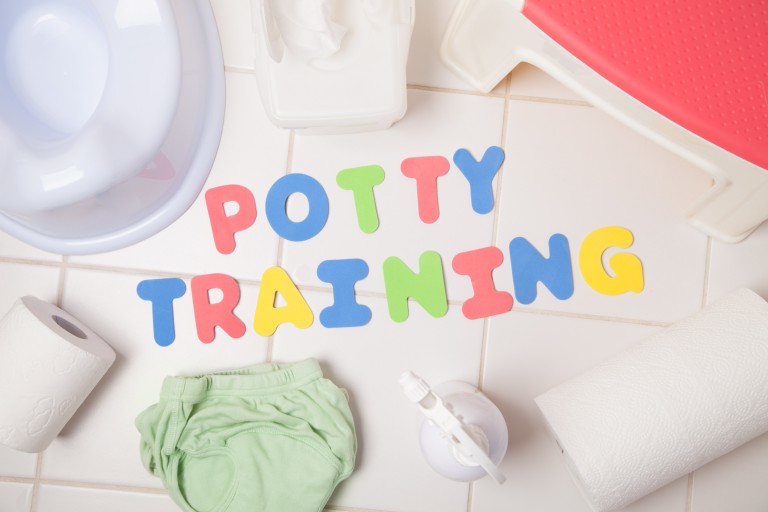Advice from Dr. B
Pediatrician's Perspective
Pediatrician's Perspective

Potty training is a big step for toddlers. Graduating from diapers to “big kid” underpants is exciting, but this process can also cause angst for little ones. Some children fear going to the bathroom and decide to ignore their urge to “go” and hold their stools.
This regression is not only frustrating, but it can also be the culprit of a child’s constipation. It’s called functional constipation, and it’s the most common cause of constipation in children over 18 months of age.
How does withholding cause constipation? When the child avoids going to the bathroom, the colon absorbs more water from the stool, making it hard and dry. Continuing to resist the urge to go can cause the brain to begin to ignore the urge as well.
It’s different for every child, but most children are ready for potty training between age 2 and shortly after their third birthday. However, there are a few signs that a child is ready. One early sign is when the child lets you know their diapers are dirty. You can be sure that the child is ready when they start letting you know just before they need to go. This demonstrates that the child recognizes the urge to go, yet has gained some control.
A potty chair may not seem scary, but for a child, it is something entirely new. You need to give your child a chance to get used to the toilet. One idea is to have him or her sit on the toilet fully clothed for a few minutes each day while you read a book (a few suggestions include Everyone Poops by Taro Gomi, Once Upon a Potty by Alona Frankel and Sam’s Potty by Barbro Lindgren).
Basic psychology supports the idea that if you reward a behavior directly after it happens, you can “condition” a subject (in this case, your little one) into continuing that desired behavior. This applies to potty training, but only if your child is ready to be potty trained in the first place. You might start out by offering a small treat or a sticker after the child tries to go, regardless of the outcome. As the child progresses, parents should only offer the incentive if he or she actually uses the bathroom.
Schedule a few unhurried minutes on the toilet after meals. This is a good habit that helps encourage regular use of the bathroom.
Fiber helps kids stay regular by creating soft, bulky stools that are easy to pass and promoting contractions that keep food moving through the intestinal tract. Fiber is found in foods like fruits, vegetables and whole grains.
Just like fiber, fluids like water help to soften stools and make them easier to pass.
If your child does experience constipation while potty training, it’s important to relieve it quickly and then work to fix it. Over-the-counter medicines such as Pedia-Lax®, the first complete line of laxatives made just for kids, offer good oral and rectal options that provide relief for constipated kids. Pedia-Lax® offers options that work quickly, overnight or gradually and comes in kid-friendly formulas and flavors, including the first quick dissolve laxative strip.
While there are many tips that can make potty training a little easier, it’s probably most important to acknowledge that potty training requires patience, which is an important virtue as your child continues to accept new responsibilities. Just wait until they ask for the car keys!